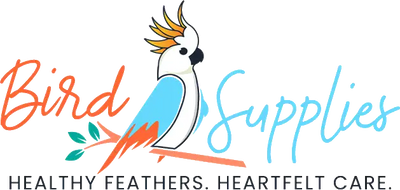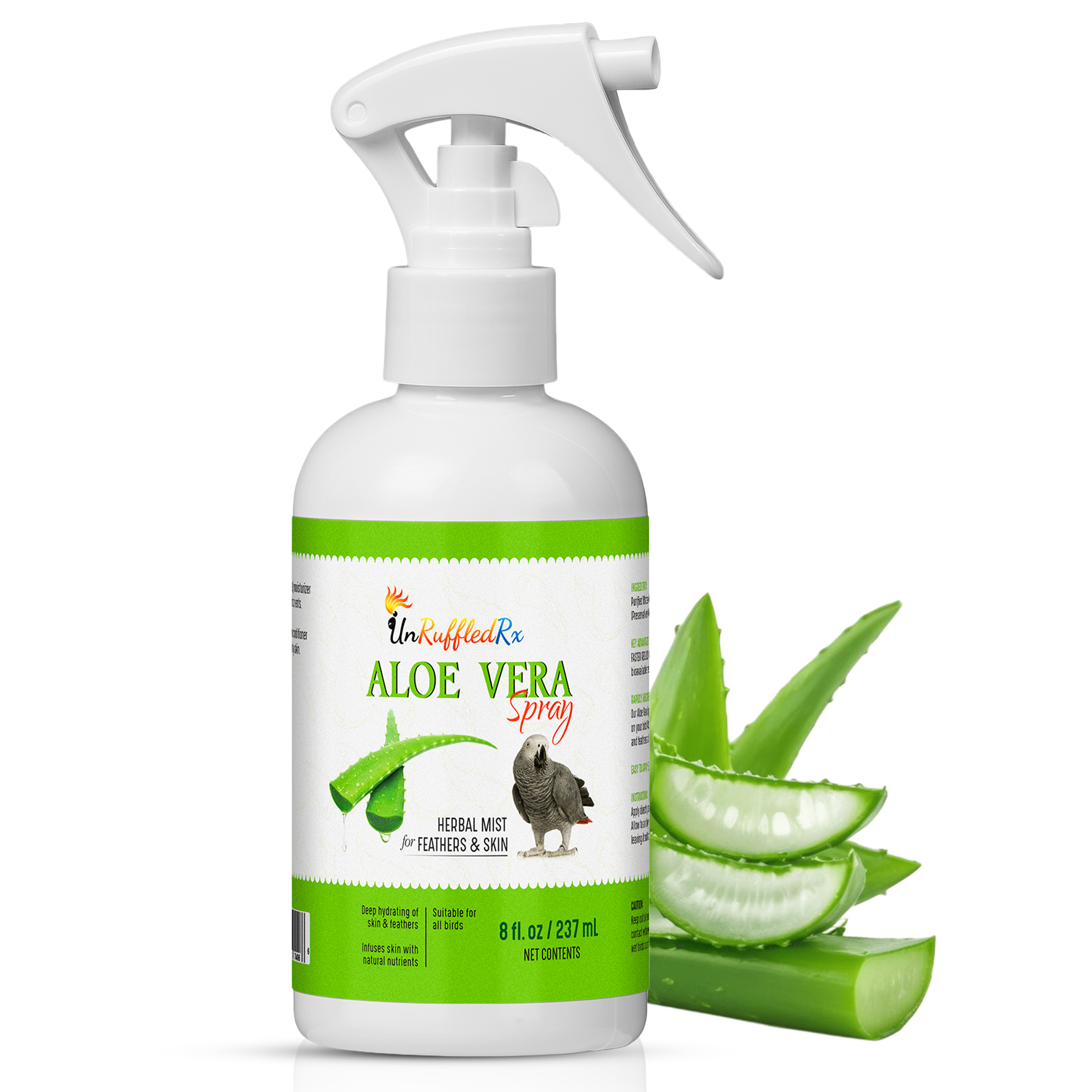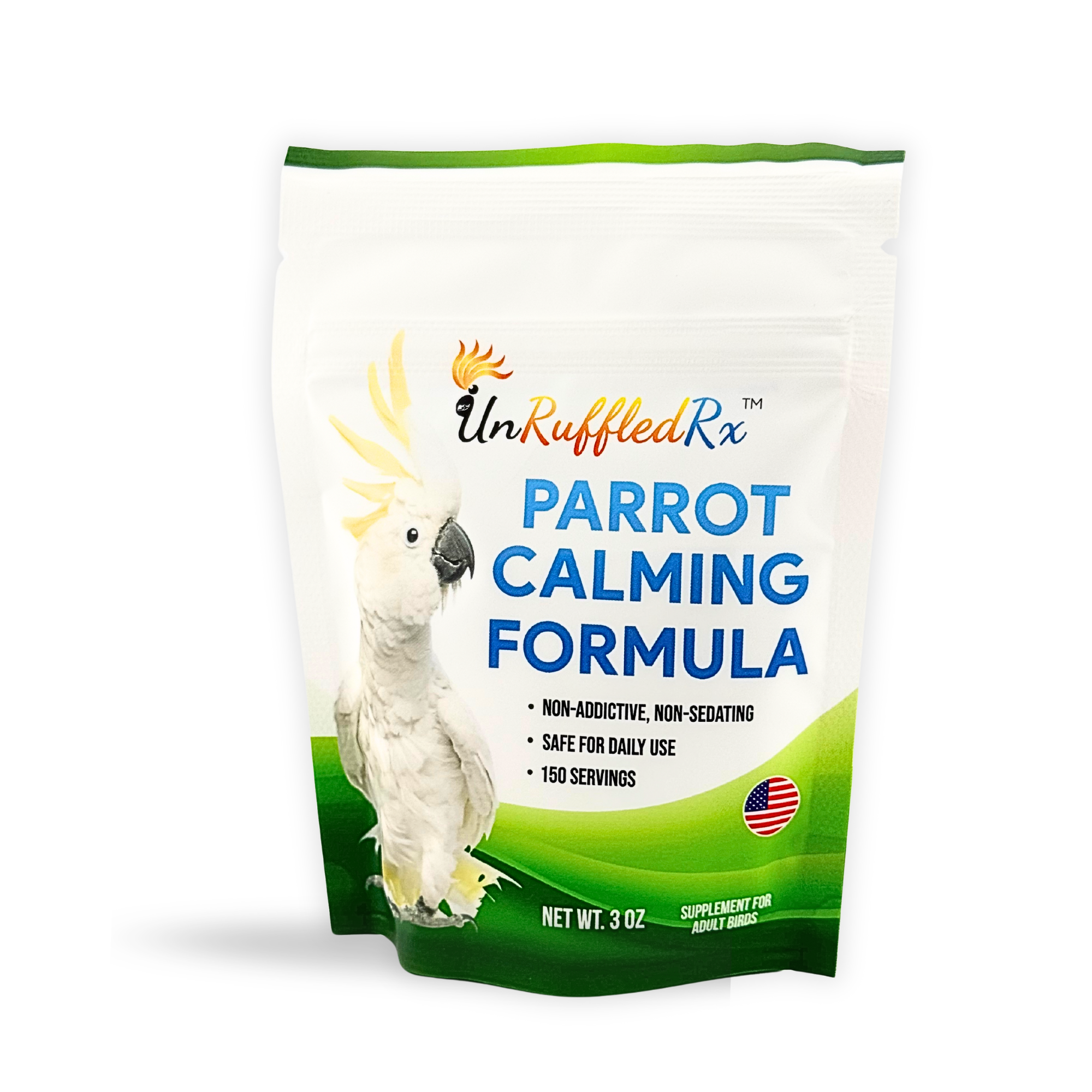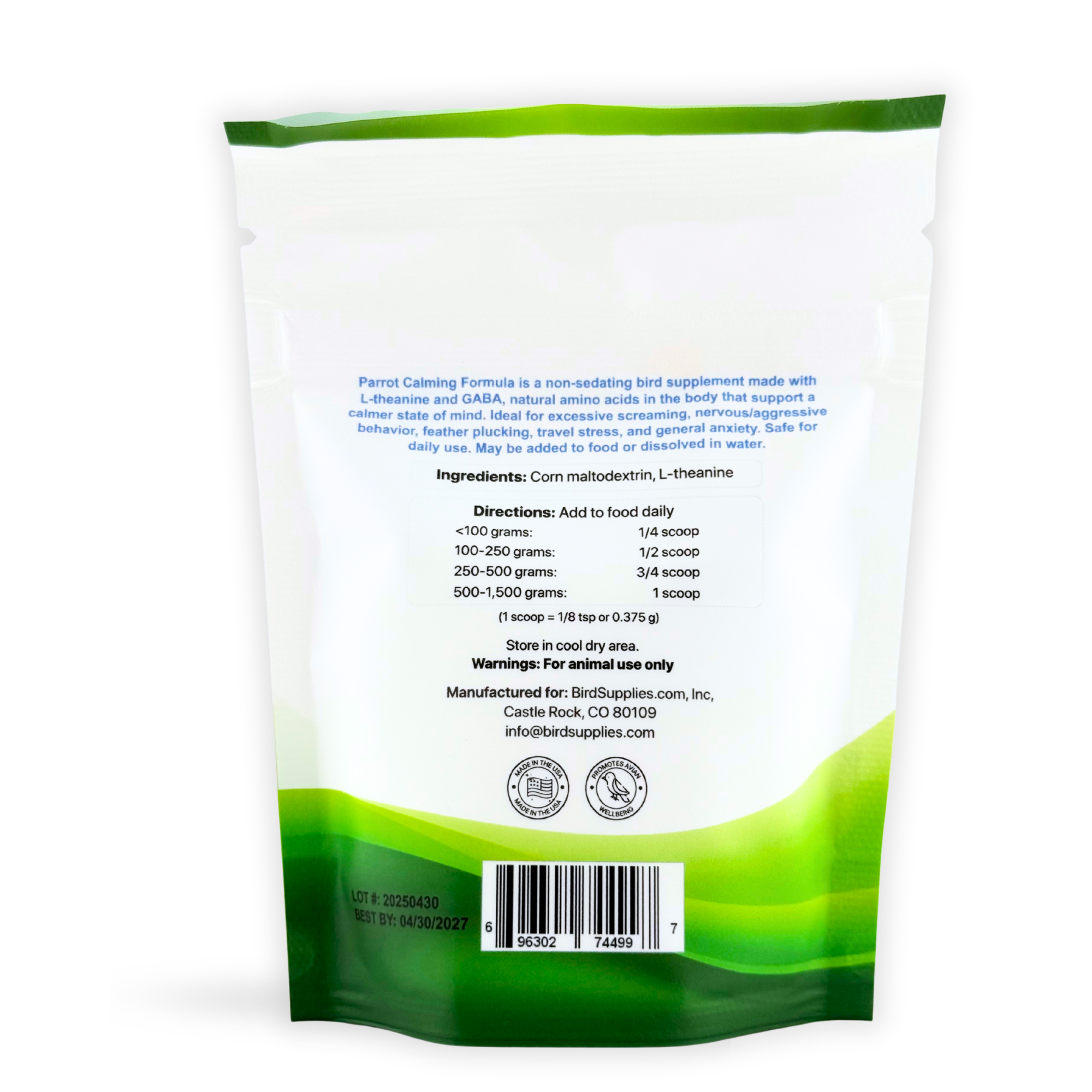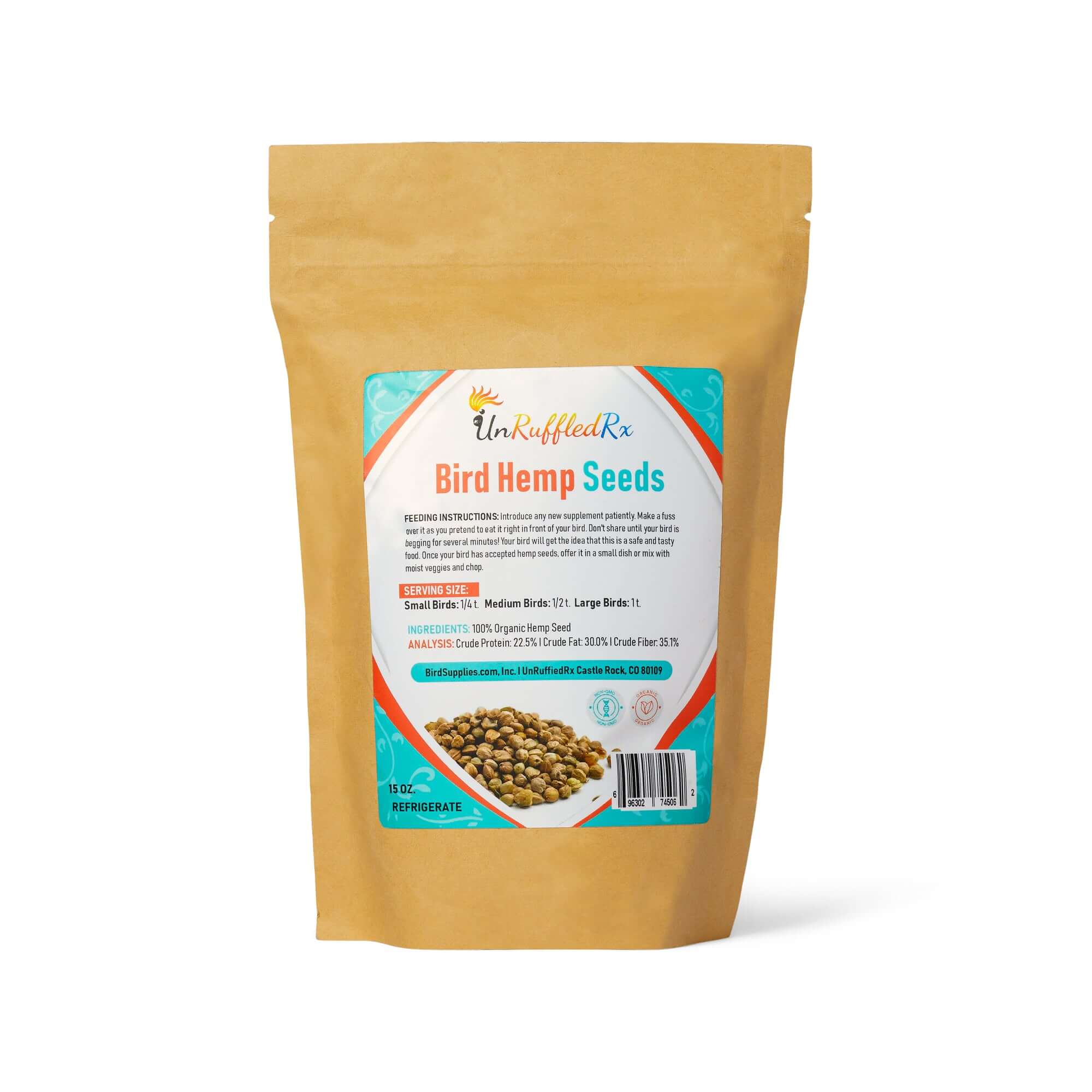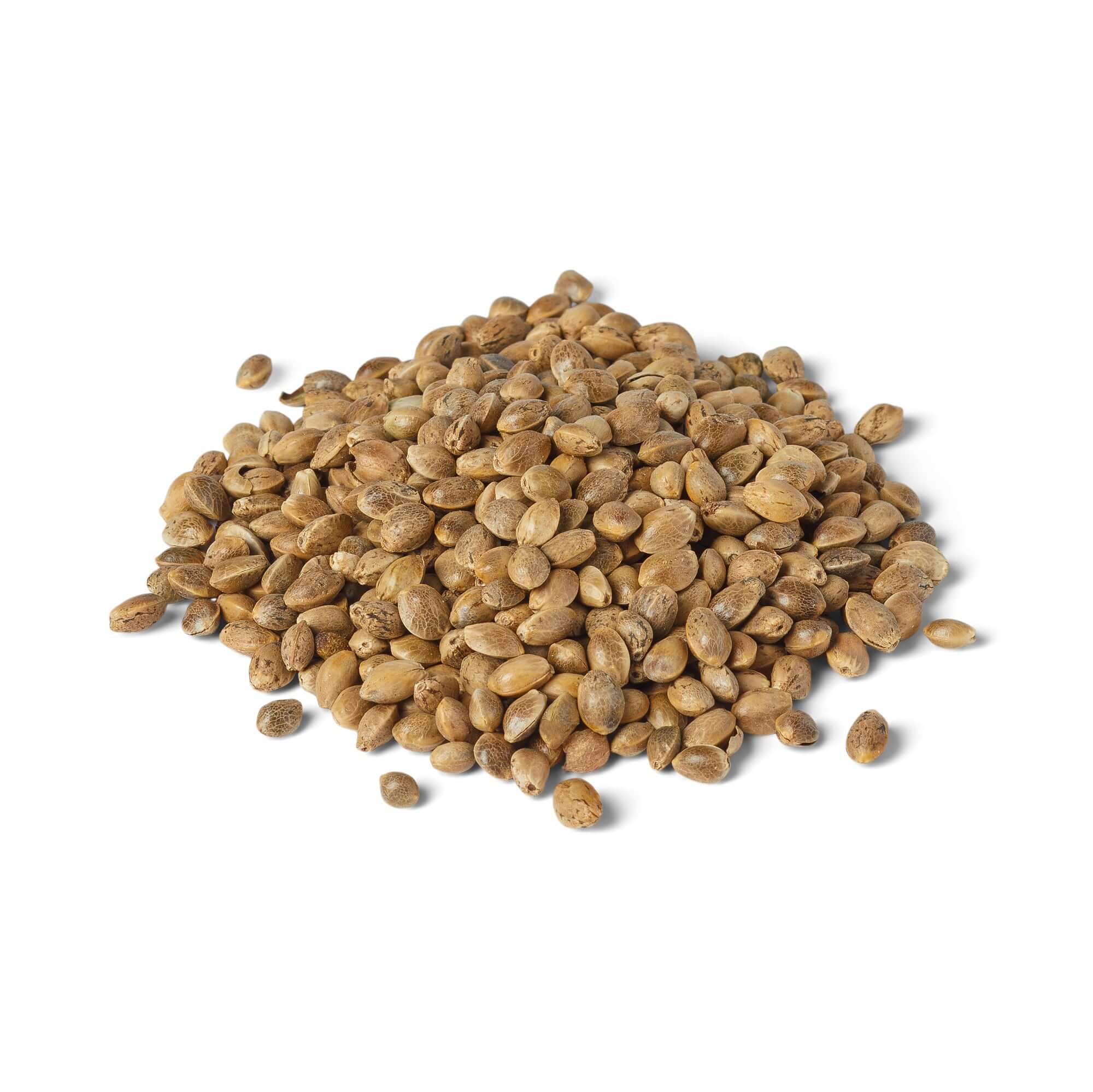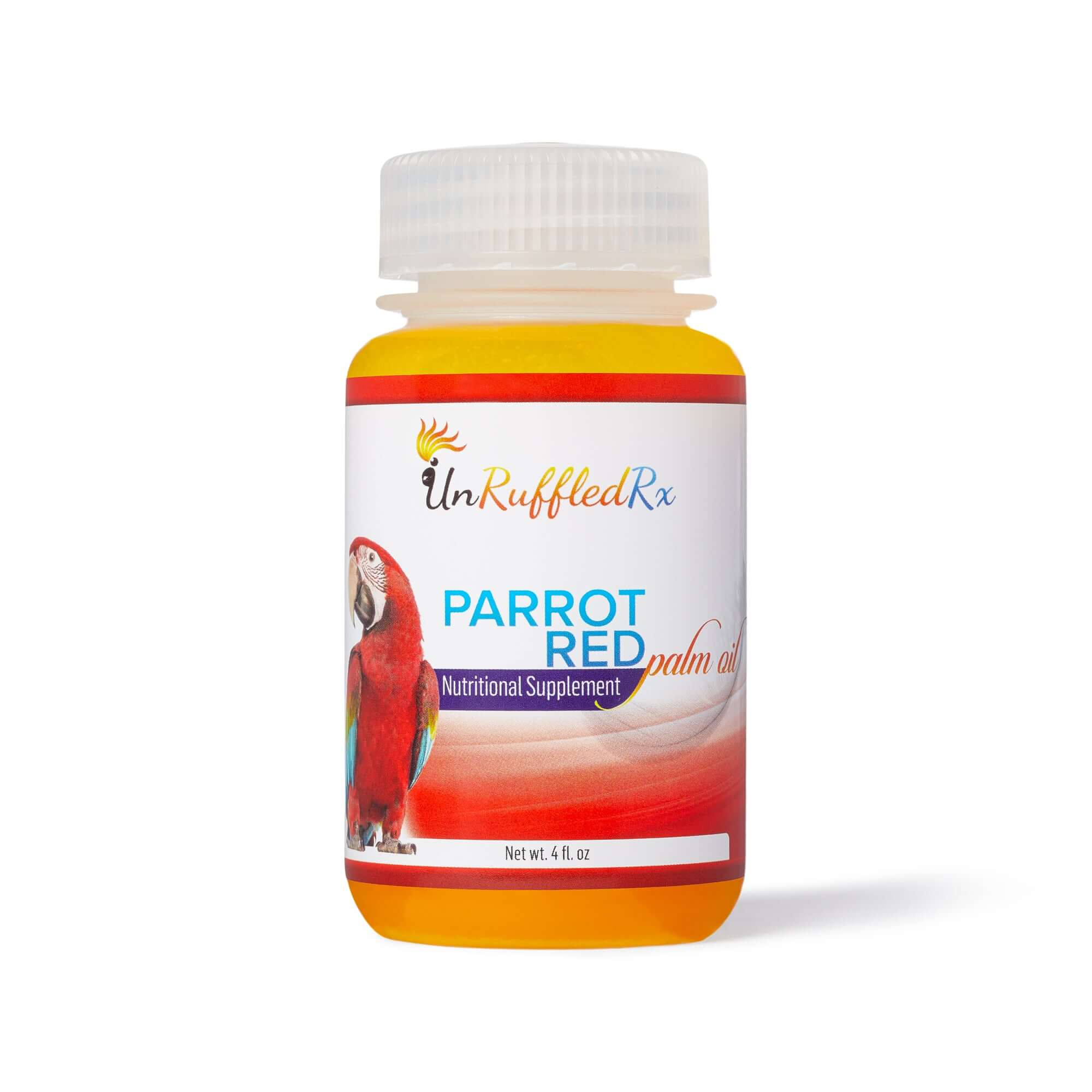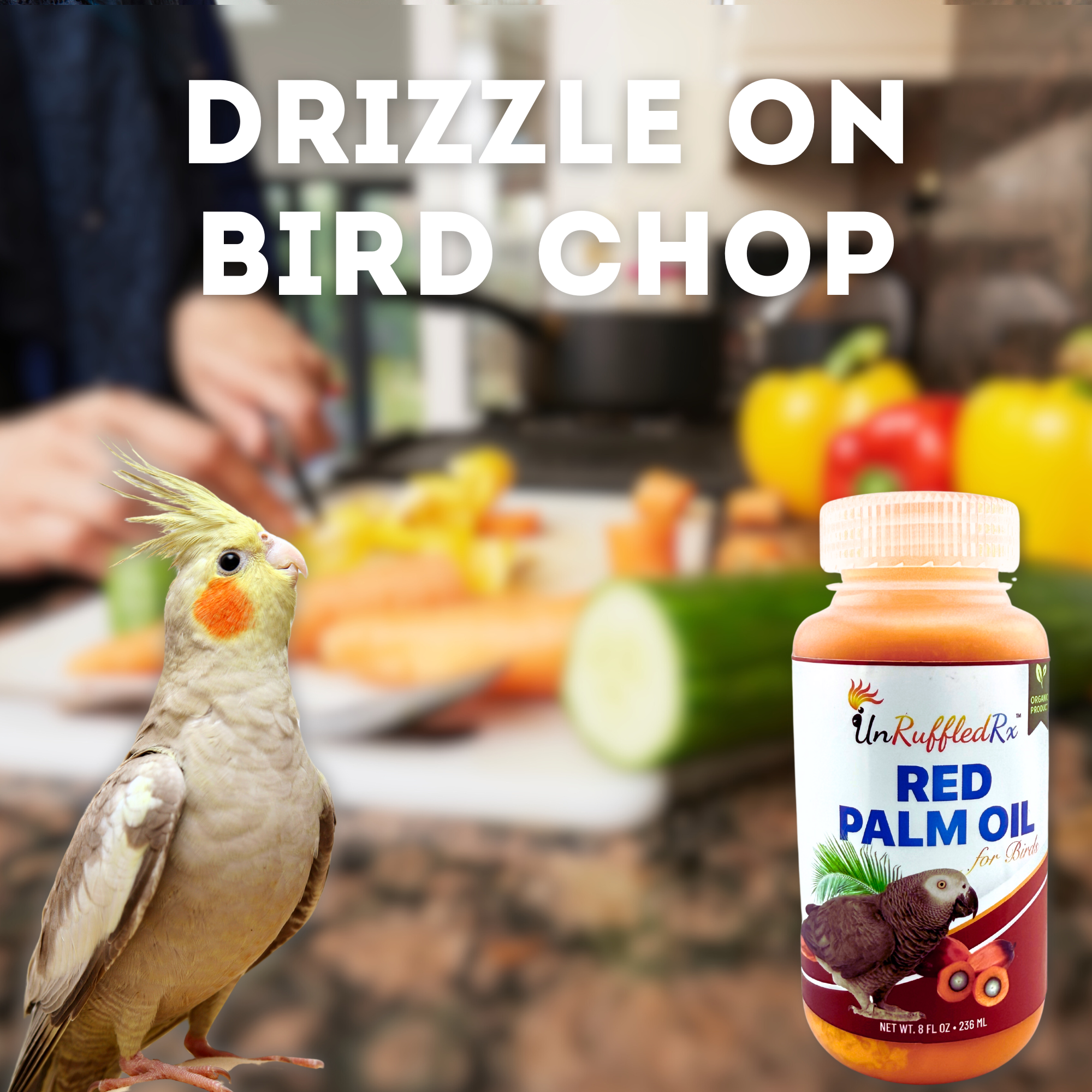- What Is Red Palm Oil for Birds?
- Why Red Palm Oil Fuels Healthy Parrots
- Top 5 Red Palm Oil Benefits for Birds
- Is Red Palm Oil Safe for Parrots & African Greys?
- Red Palm Oil Dosage for Birds: How Much & How Often
- Serving Red Palm Oil: Easy Tips Birds Love
- Choosing Sustainable Red Palm Oil for Birds
- Red Palm Oil FAQ for Bird Owners
Is your bird dealing with dry, itchy skin? Crusty nostrils? Respiratory issues? Dull feathers that just won’t shine?
These are all classic signs of low omegas, vitamin E, and vitamin A. Without enough of these key nutrients, your parrot’s skin dries out, their immune system struggles, and feather health takes a nosedive.
The good news? With the right support, you can turn things around fast.
What Is Red Palm Oil for Birds?
From Palm Fruit to Bird Bowl
Most “palm oil” at the grocery store is a refined, pale yellow cooking oil — stripped by high heat and bleaching until it’s basically empty calories. That’s not what your bird needs. True red palm oil comes from the bright red fruit of the African oil palm and is cold-pressed, unrefined, and bursting with nutrients like beta-carotene, vitamin E, and healthy fats birds can actually use.
The best oils come from small farms in West Africa and organic groves in Ecuador’s Esmeraldas Province. Certifications like RSPO, Palm Done Right, and Fair for Life tell you the oil was grown responsibly — no rainforest destruction, fair wages, and minimal processing that locks in nutrition.
Just a drop or two of this vivid red oil gives your bird a natural lift of pro-vitamin A, antioxidant tocotrienols, and balanced fatty acids. The result? Glossy feathers, supple skin, and strong immune defenses — all without changing their whole food bowl.
The Science Behind the Red Color
Beta-carotene and alpha-carotene give red palm oil its sunrise hue. These natural pigments store in the oil until your bird’s body converts just what it needs into vitamin A. No synthetic dyes—only plant-made antioxidants doing the work.
Notice a chunky or grainy layer when the jar is cool? Those carotene-rich crystals form in truly unrefined oil and melt smooth around 80 °F. Their presence signals minimal processing and a fuller spectrum of nutrients.
Once digested, the carotenes support healthy vision, moist skin, and robust immune barriers. They team up with vitamin E tocotrienols to curb oxidative stress inside delicate feather follicles. A tiny drop delivers big, nature-powered protection.
Virgin vs. Refined Palm Oil
Virgin red palm oil is cold-pressed straight from the fruit, then filtered—no nasty, toxic chemical like hexane, no bleaching clay, no deodorizing. That gentle process keeps beta-carotene, vitamin E tocotrienols, and balanced fatty acids intact. The oil stays naturally red and faintly nutty in flavor, perfect for food-grade use.
Here you go—copy/paste this into the **HTML** view of your Shopify blog post: ```html
RSPO Red Palm vs Cooking Palm Oil
Not all palm oil is the same.
Here’s the difference that makes bird lovers go “Wow, I didn’t know that!”
| What we’re comparing |
🐦 RSPO Red Palm (Unrefined)
|
🧴 Refined Palm Oil (Cooking)
|
|---|---|---|
| How it’s made | Cold-pressed, unrefined red palm fruit oil that keeps its natural goodness. | Refined, bleached, deodorized (RBD). Built for frying, not nutrients. |
| Nutrients left inside | Packed with carotenoids (precursors to vitamin A that birds need for soft, supple skin) and tocotrienols (vitamin E family). | Refining strips most carotenoids and lowers vitamin E profile. |
| Color & smell | Deep red-orange = carotenoids at work. Mild, natural aroma. | Pale yellow to clear. Neutral aroma. |
| Sustainability signal | ✔ RSPO = audited & traceable for more sustainable sourcing. | Commodity oil, often uncertified. Sustainability varies. |
| Label clues | Look for “red palm fruit oil”, “unrefined/virgin” + an RSPO mark. | Often just “Palm Oil” or “RBD Palm Oil.” RSPO may be missing. |
| Best use | Tiny, guided dietary inclusion. A natural way to support skin & feather wellness. | High-heat cooking & frying. Not bird-safe supplementation. |
- The red color comes from natural beta-carotene (a vitamin A precursor).
- Carotenoids help keep bird skin soft, supple, and healthy.
- Refining strips out carotenoids and vitamin E compounds, leaving little nutritional value for birds.
Educational content only. Always follow your avian vet’s guidance on diet and supplements.
For parrots, always pick virgin, unrefined, cold-pressed oil listed as food grade. It delivers the full nutrient profile birds need in tiny, precise doses. Anything else is just empty calories and missed benefits.
Why Red Palm Oil Fuels Healthy Parrots
Vitamin A Powerhouse
Think your parrot’s diet has enough vitamin A? You might be surprised.
Even “complete” diets can fall short on this essential nutrient—one that protects your bird’s eyes, skin, sinuses, and even their ability to preen and breathe easily.
Here’s where red palm oil gets interesting: it’s rich in beta-carotene, a natural pigment your bird’s body turns into vitamin A only when it’s needed—no overload, just smart nutrition.
What happens when your bird gets the right amount? Sharper vision. Softer skin. Easier breathing. And feathers that practically glow.

Vitamin E & Antioxidants
Red palm oil is unusually rich in tocotrienols, a potent form of vitamin E that mops up free radicals before they nick DNA and cell membranes.
Indoor birds breathe drier air, bask in little natural UV, and face more airborne pollutants—conditions that crank up oxidative stress.
A measured drop of this oil delivers antioxidant backup that helps immune cells stay sharp and feather follicles recover from everyday wear.
Fat-Soluble Nutrient Booster
Red palm oil supplies the dietary at birds need to absorb vitamins D, K, and carotenoids found in vegetables. Improved absorption strengthens bones, supports normal blood clotting, and deepens feather pigmentation.A few measured drops mixed with bird chop or pellets raise the meal’s nutritional value without adding extra bulk.
Top 5 Red Palm Oil Health Benefits for Birds
-
Healthier Feathers and Skin
Essential fatty acids lower dander, hydrate skin, and add natural shine to plumage.
-
Easier Molting Cycles
Beta-carotene and vitamin E calm itchy pin feathers and support strong new quills.
-
Stronger Immune Barriers
Vitamin A fortifies the lining of the throat and lungs, helping block everyday pathogens.
-
Steady, Low-Stress Energy
Long-chain fats digest slowly, providing consistent fuel without sugar highs or crashes.
-
Improved Diet Acceptance
Mild nutty flavor encourages picky eaters to consume veggie-rich chop and pellets.
Is Red Palm Oil Safe for Parrots & African Greys?
Species That Thrive on Palm Oil
Wondering if red palm oil could be the missing piece in your parrot’s diet?
This vibrant oil isn’t just eye-catching—it’s packed with real benefits like shinier feathers, stronger immunity, and smoother molts.
Our quick guide breaks it all down: what it does, how to serve it, and why even a tiny drop can make a big difference in your bird’s daily routine.
👉 Peek inside and see if it earns a spot on tomorrow’s chop.
Birds That Need Vet Guidance
Amazon parrots are prone to fatty-liver disease when dietary fat is high; any oil supplement should be given only in micro-doses under veterinary supervision (VCA Animal Hospitals, n.d.).
Eclectus parrots thrive on lower-fat, high-fiber produce; excess oils can upset the balance, so start with tiny amounts and consult an avian vet (Melbourne Bird Veterinary Clinic, 2023).
Red Palm Oil Dosage for Birds: How Much & How Often
A simple rule of thumb many avian vets use is ¼ teaspoon of red palm oil for every 350 g of body weight. That works out to roughly 25 drops per 350 g, taken no more than three times a week. The table below scales that guideline for common parrot weight ranges—adjust a drop or two either way, and always check with your vet for birds that are growing, breeding, or on special diets.
| Bird weight (g) | Approx drops * | Approx teaspoon | Times per week |
| < 30 g (Budgie) | 2 drops | 0.02 tsp | 3 |
| 30 – 60 g (Cockatiel) | 4 drops | 0.04 tsp | 3 |
| 60 – 120 g (Conure) | 7 drops | 0.07 tsp | 3 |
| 120 – 250 g (Small Amazon) | 14 drops | 1/8 tsp | 3 |
| 250 – 500 g (African Grey, Med. Cockatoo) | 29 drops | 1/4 tsp | 3 |
| 500 – 900 g (Large Cockatoo) | 50 drops | 1/2 tsp | 3 |
| 900 g + (Macaw) | 71 drops | 3/4 tsp | 3 |
*Twenty-five drops ≈ ¼ tsp. Drop counts are rounded to the nearest whole number.
Aim for just one omega-rich supplement per day (for example, red palm oil or a sprinkle of ground flax), so the overall fat load stays heart-healthy and balanced.
Serving Red Palm Oil: Easy Tips Birds Love
Start slow: Start with just a tiny drop so your bird can ease into the taste and learn that red palm oil is a safe, yummy food.
-
Syringe Sip
Warm the bottle in your hands or a warm cup of water until the oil liquifies.
Pull up a drop or two with a small syringe.
Pretend you're eating it in front of your bird - acting like it is the best thing you've ever tasted!
When your bird shows interest in it, touch the tip to your bird’s beak and praise, “Good job!”
-
Juice Boost
Get your bird interested in a sip of juice or baby food served on a spoon.
Add the same small drop of the oil to the juice or baby food and serve it to your bird. Slowly increase the amount of oil until you reach the right dosage while lowly decreasing the amount of juice.
-
Mealtime Mix-In
Drizzle the drop over morning chop, pellets, or seed so every bite glistens.
Show it’s safe—taste by pretending to eat spoonful yourself and give an excited “Ooh, yum!”
When your bird is begging for a taste, give them a tiny amount making sure to praise them for trying it.
Try these strategies over and over again (just like you teach a toddler to eat new veggies). Increase the amount slowly over a week or two, and enjoy those shiny feathers!
Choosing Sustainable Red Palm Oil for Birds
- ☑ RSPO-certified or Fair for Life seal helps fight rainforest loss and protects wild bird homes
- ☑ Label says “virgin” or “unrefined” guarantees no bleaching clay or deodorizing heat
- ☑ “Cold-pressed” clearly stated means no hexane or other harsh solvents
- ☑ Naturally red hue beta-carotene intact, faint nutty aroma—just like food-grade oil should be
- ☑ Non-GMO and organic where possible keeps pesticides out of your bird’s bowl
- ☑ Eco-friendly packaging recyclable glass or BPA-free plastic cuts landfill waste
If a product doesn’t check these boxes—especially RSPO, virgin, and cold-pressed—steer clear; heat-refined palm oil loses vitamin A, vitamin E, and balanced fatty acids and may contain chemical residues.
Red Palm Oil FAQ for Bird Owners
1. How much red palm oil should I give my African Grey?
Most keepers follow the ¼ tsp per 350 g of body weight rule. A 400–450 g Grey needs about ¼ tsp (≈25 drops) three times a week. Check our dosage guide for more sizes.
2. Is red palm oil safe for budgies and cockatiels?
Yes, in tiny doses. Budgies get 1 drop, cockatiels 2 drops, three times weekly. Monitor weight since small birds store fat quickly.
3. Can red palm oil help with feather plucking?
It may support skin health and reduce dryness—a common plucking trigger. For best results, combine it with enrichment and behavior changes. See our guide on soothing pluckers.
4. Can I use grocery-store palm oil instead?
If if is general red palm cooking oil, we discourage it. Refined, bleached, deodorized (RBD) palm oil loses nutrients and may contain toxic by-products. Choose virgin, cold-pressed, RSPO-certified oil only.
5. How often should I serve red palm oil each week?
Three times a week is ideal for most parrots. It boosts vitamin A without overloading fat. Macaw's may benefit from a little more fat than other species.
6. Why does my jar look chunky—has it gone bad?
Chunky texture reflects that the oil has been minimally processed.
7. Can red palm oil make my bird overweight?
Yes - if you overdo it or feed other fatty treats the same day. Stick to the guide, weigh weekly, and rotate in leafy greens for omega balance.
8. Is red palm oil the same as “palm nut oil” sold for parrots?
Yes! "Red palm," "palm nut oil," and "palm nut extract" are often used interchangeably. Always verify it's virgin, cold-pressed, and sustainably sourced.
9. How long does red palm oil last once opened?
Keep it in a cool, dark cupboard. Tightly sealed, it stays fresh for about six months or more.
10. Can I mix red palm oil with flax or hemp on the same day?
Not recommended on the same day. Pick one omega-rich product per day. Rotate them across the week to balance fat intake.
In conclusion....
Now that you know what’s behind many cases of dry, itchy skin, ragged feathers, and plucking, you’ve got a new tool in your toolbox. Just a few drops of red palm oil can make a big difference. It’s an easy upgrade that helps your bird sail through molts, makes skin supple, keeps feathers bright, and supports overall health. Mix it into chop or pellets a few times a week and watch your feathered friend regain their shine—and their comfort. Grab some today!
Related Posts:
References:
Animalia.bio. (n.d.). Palm cockatoo – diet and nutrition. Retrieved May 4, 2025, from https://animalia.bio/palm-cockatoo
Blue Macaws Organisation. (n.d.). Research on the feeding habits of the Anodorhynchus macaws. Retrieved May 4, 2025, from https://www.bluemacaws.org/article/research-on-the-feeding-habits-of-the-anodorhynchus-macaws
Harrison, G. J., & Lightfoot, T. (Eds.). (2006). Clinical avian medicine. CRC Press.
Melbourne Bird Veterinary Clinic. (2023). Diet for Eclectus parrots. Retrieved May 4, 2025, from https://www.melbournebirdvet.com/post/diet-for-eclectus-parrots
Moreno, R., Smith, J., & Patel, L. (2019). Dietary fats and parrot health. Journal of Avian Medicine and Surgery, 33(2), 123–130.
VCA Animal Hospitals. (n.d.). Feeding African Grey parrots. Retrieved May 4, 2025, from https://vcahospitals.com/know-your-pet/african-grey-feeding
VCA Animal Hospitals. (n.d.). Obesity in birds. Retrieved May 4, 2025, from https://vcahospitals.com/know-your-pet/obesity-in-birds
Diane combines proven behavioral science with simple, real-life strategies anyone can use. Through her books, behavior consultations, and UnRuffledRx parrot wellness products, she’s dedicated to helping real bird owners create trust, confidence, and a lifetime of positive experiences with their feathered companions.
Diane's products have been featured in the Journal of Avian Medicine & Surgery and at ExoticsCon, a national conference for exotic animal veterinarians. Her bird collars and supplements are trusted by avian vets and stocked in vet clinics across the U.S. With thousands of individualized behavior plans under her belt, Diane’s mission is simple: to help parrots and their people thrive together.
TAGS: #RedPalmOilForBirds #ParrotNutrition #BirdCare
SHARING IS CARING! 📣
Love what you read?
Help spread the word on Facebook & Instagram 🌟
💬 Leave a comment below and let us know your thoughts!
